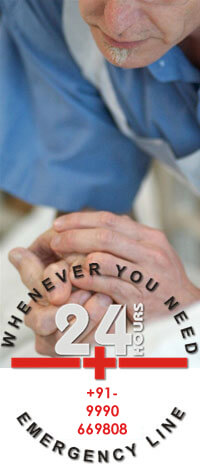CPR Training Delhi - Circulation
Adult CPR - CIRCULATION
In CPR and First Aid Training course "C" stands for CIRCULATION. Check the pulse of the casualty to determine whether heart is beating or not. There are various places in human body to check the pulse. Radial pulse on forearm, brachial pulse at elbow joint and important one is Carotid pulse situated in neck. Carotid pulse is easy to locate. You place two fingertips in the depression near your voice box or throat. This is an important aspect of CPR and first aid training. As per Delhi first aid training institute curriculum checking of pulse and breathing should be done quickly so as to provide first aid and CPR quickly and efficiently. Normal pulse rate is in the range of 72-80/minute. It is increased in children and infants so while checking the pulse you should pay attention to the age of victim. This will help you diagnose properly the condition of the patient and will provide First aid and CPR effectively.
If heart is not working properly there will be deficiency in circulation resulting in low content of oxygenated blood .Therefore to analyze the casualty and to give proper CPR and first aid you will have to check his breathing properly. It is one of the vital indegriend in CPR and first aid.
Important thing to remember while performing CPR and first aid is maintaining proper blood circulation and oxygen content in the body.
Only perform CPR if the adult is not breathing, or in children and infants, when they are not breathing normally, and their blood is not circulating. This is why it is important to ensure that the person does not respond to verbal or physical calls to attention before starting the CPR process.
CPR is a life-saving first aid method. It can truly improve someone’s changes of surviving if they suffer a heart attack or stop breathing following an accident or trauma.
The steps of First Aid may vary depending on whether the person is an infant, child, or adult. However, the basic cycle of chest compressions and recovery breaths will remain the same.
Only use CPR when an adult has stopped breathing. Check the person to see whether they respond to verbal or physical motivation before starting CPR.
If there is no heartbeat then the injured person's heart is not working, and you will have to do chest compressions![]()


































